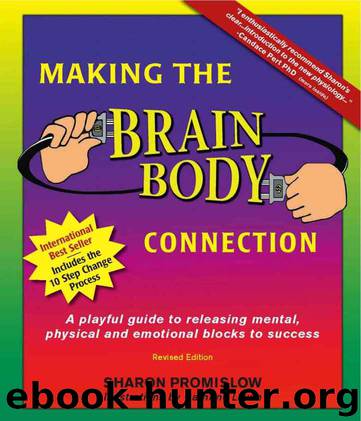0968106633 by Unknown

Author:Unknown
Format: epub
Published: 0101-01-01T00:00:00+00:00
The whole is truly greater than the sum of its parts: a whole brain/body model for brain function
Dr. Paul Dennison, founder of Educational Kinesiology, and Gail Dennison, speak of brain function in terms of three brain-postural dimensions: focus, centering and laterality. The Dennisons’ Brain Gym®movements were designed to integrate all areas of brain function in order to enhance learning.
The focus dimension: “where am I?”
The focus dimension is key for comprehension. According to the Dennisons, we must develop neural connections to determine where we are in space, before we can determine where we “end,” and the rest of the world “begins.” Movement in space gives us that experiential knowledge. When the front lobes of the cerebral cortex are in balance with the back brain, we gain comprehension with maturity, and, ultimately, achieve focus.
Developmentally, we are dealing with (1) vestibular (inner ear) balance, (2) muscle proprioception (the feedback loop between brain and muscles), and (3) vision. It is my understanding that attention deficit issues are not primarily a product of the higher reasoning cortex, but rather lie with the brain stem and the reticular activating system allowing the flow to the cortex of the non vigilant, filtered communication needed for focus. Babies lay down these developmental connections through movement in a safe environment, movement at first random, then ultimately intentional. In most cases focal ability pre-requires the very movement and vestibular stimulation that is cut off when a child is expected to sit still for the learning process. This ability to coordinate the information flow between the back and front parts of the brain is necessary to understanding new information in the context of all previous experience and to being able to act appropriately on the details of a situation. This is the focus dimension. It directly responds to releasing the classic stress response of which the Tendon Guard Reflex is a part.
To activate these parts of the brain: Stand up and sway forward and back. You are activating your vestibular balance system, muscle proprioception and vision, to control where you are in space.
Support for the focus dimension: Lengthening and relaxing activities such as the Rocker™; the Energizer™, Leg muscle release, the Owl™, any other activities that release the tendon guard reflex back & neck muscles.
Download
This site does not store any files on its server. We only index and link to content provided by other sites. Please contact the content providers to delete copyright contents if any and email us, we'll remove relevant links or contents immediately.
Sita - Warrior of Mithila (Book 2 of the Ram Chandra Series) by Amish(54650)
The Crystal Crypt by Dick Philip K(36771)
Cat's cradle by Kurt Vonnegut(15182)
Always and Forever, Lara Jean by Jenny Han(14798)
Ready Player One by Cline Ernest(14524)
The Last by Hanna Jameson(10146)
Year One by Nora Roberts(9700)
Persepolis Rising by James S. A. Corey(9225)
The remains of the day by Kazuo Ishiguro(8819)
Never let me go by Kazuo Ishiguro(8704)
Red Rising by Pierce Brown(8608)
Dark Space: The Second Trilogy (Books 4-6) (Dark Space Trilogies Book 2) by Jasper T. Scott(8116)
The handmaid's tale by Margaret Atwood(7678)
The Circle by Dave Eggers(7035)
Frank Herbert's Dune Saga Collection: Books 1 - 6 by Frank Herbert(6937)
The Testaments by Margaret Atwood(6772)
Legacy by Ellery Kane(6583)
Pandemic (The Extinction Files Book 1) by A.G. Riddle(6456)
Six Wakes by Mur Lafferty(6148)
